Microsoft Azure Security Technologies (AZ-500)
Identity Protection
Implement Azure AD conditional access
In this lesson, we explore how to implement Azure AD Conditional Access—a critical security feature that enables you to define policies determining who can access your cloud-based applications. These policies are essential for protecting sensitive information by ensuring that only authorized users gain access.
Imagine working for a company where you want to restrict access to a specific application to employees physically present in the office. With Azure AD Conditional Access, you can create a policy that allows access only from the internal corporate network. Even if someone has the correct password, they will be denied access if they are not on the trusted network. This additional security layer safeguards your applications and data.
How It Works
Azure AD Conditional Access policies are evaluated during each access attempt by considering several signals:
- User and location
- Device being used
- Application being accessed
- Real-time risk (derived from user risk and sign-in risk policies)
These signals help determine whether to grant access, prompt for multi-factor authentication (MFA), or block the access attempt.
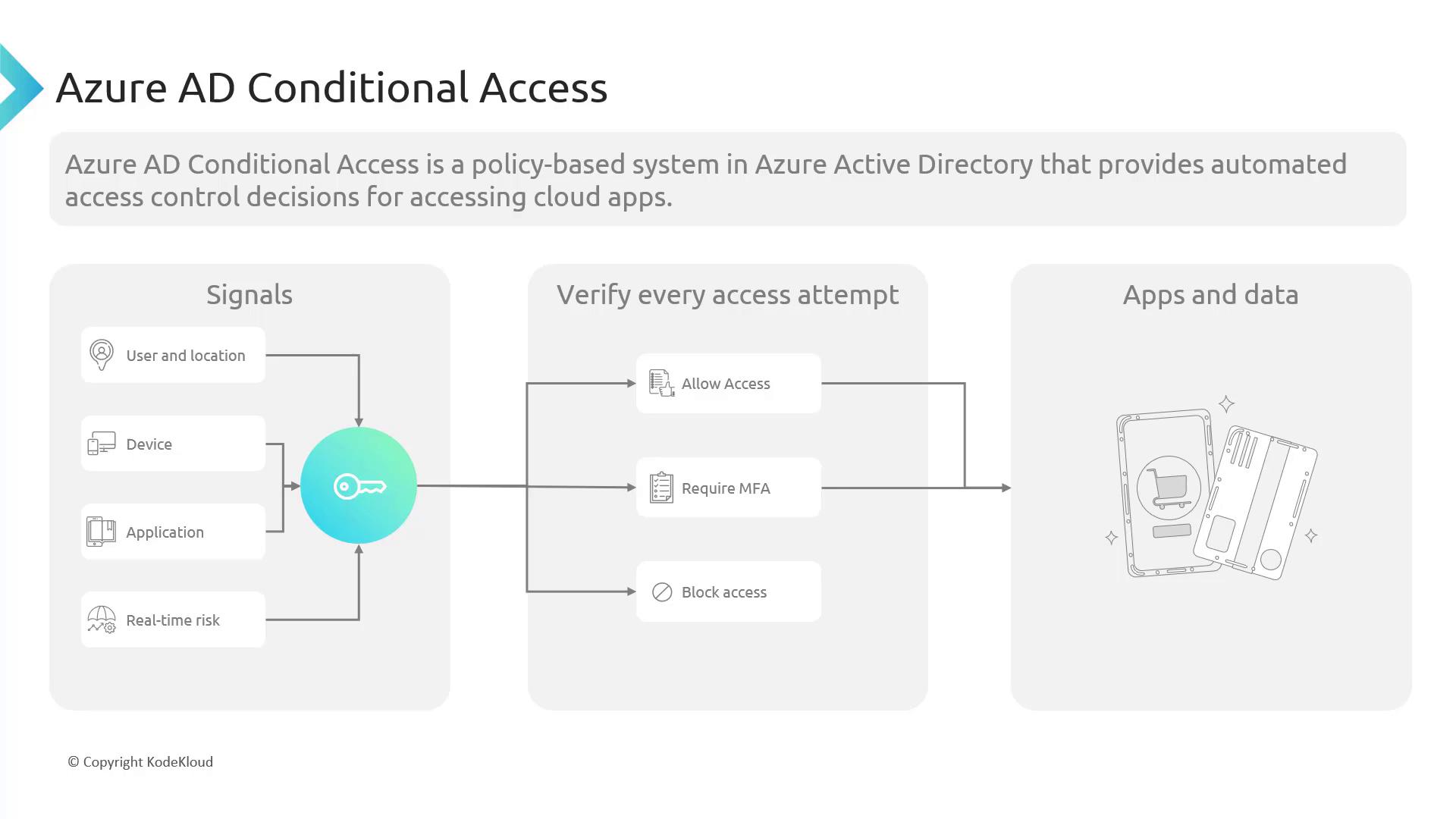
In summary, when a user attempts access:
- If all conditions are favorable, access is granted.
- If additional verification is needed, the user is prompted for MFA.
- If the conditions are not met, access is blocked.
Key Features of Azure AD Conditional Access Policies
1. Conditions
Conditions define the “when” and “where” of security, specifying when a policy should trigger by evaluating factors such as:
- Risky or safe locations (e.g., secure office network vs. other networks)
- Device compliance (ensuring the device is managed and secure)
- User sign-in risk levels
These conditions allow you to monitor and alert you about abnormal or risky access attempts.
2. Access Control
Access control determines the appropriate actions when a policy is triggered, defining “how” to respond:
- Prompting for MFA
- Requiring device compliance with organizational security standards (e.g., via Intune)
- Blocking access entirely if necessary
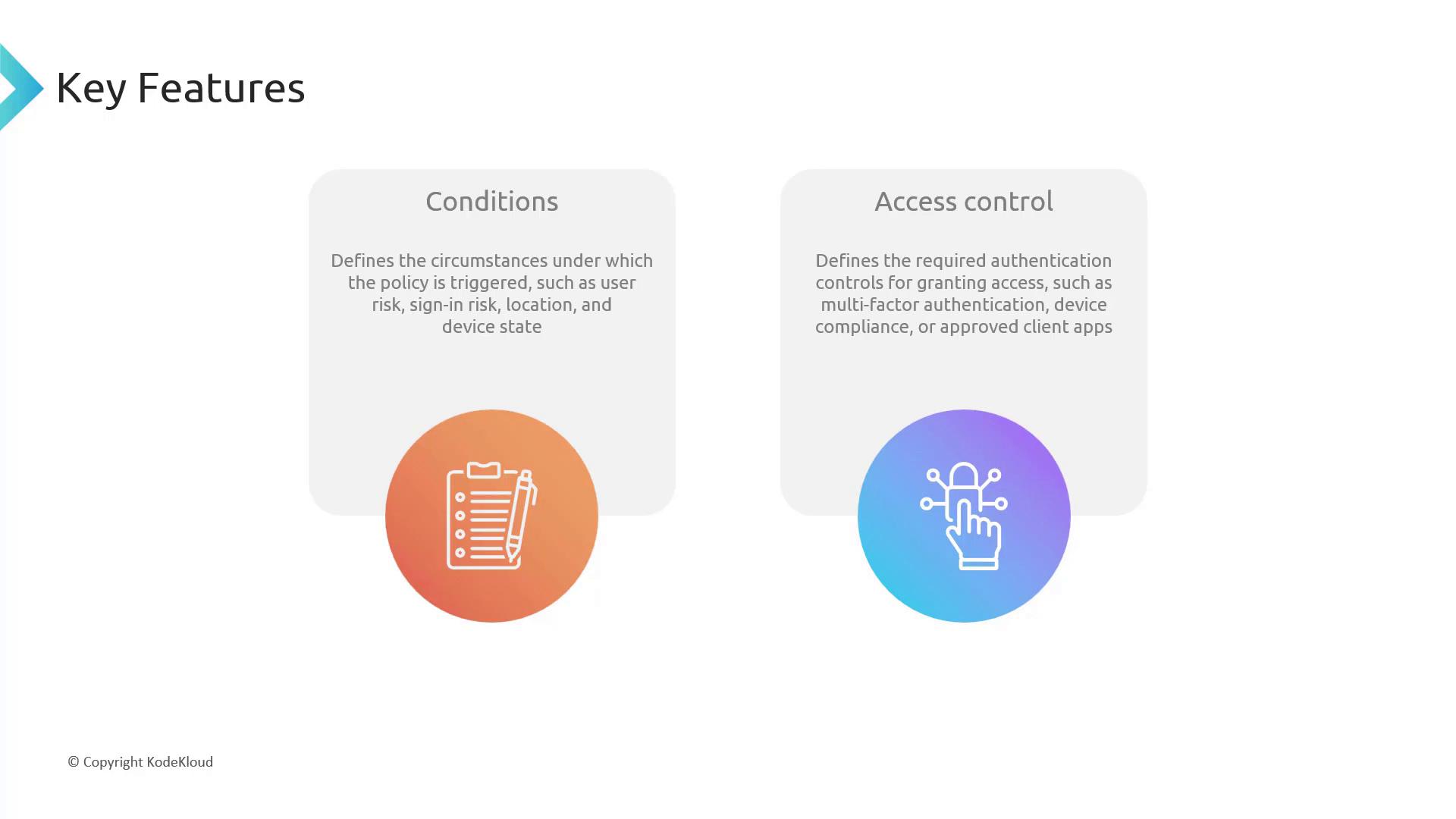
In essence, conditions alert you to potential issues, while access controls determine the response.
Benefits of Using Azure AD Conditional Access
Customized Access
Conditional Access enables you to tailor security rules based on a user’s role. For example, global administrators, user administrators, and standard users can have customized policies that align with their respective access needs and risk profiles.
Enhanced Security
Relying solely on passwords is often insufficient. If an access attempt originates from a new or high-risk location, enhanced security measures—such as MFA—are enforced, adding an extra layer of protection to your resources.
Unified Policy Platform
Azure AD Conditional Access offers a unified platform to apply consistent security rules across multiple Azure AD applications. This streamlined approach reduces administrative burdens while strengthening overall security.

How Conditional Access Works
Conditional Access policies act as a decision-making flow block. When a user attempts to access a resource, various signals—such as group membership, application type, device state, location, client application, and sign-in risk—are evaluated. Based on these conditions, the policy will either allow access, require MFA, or block access.
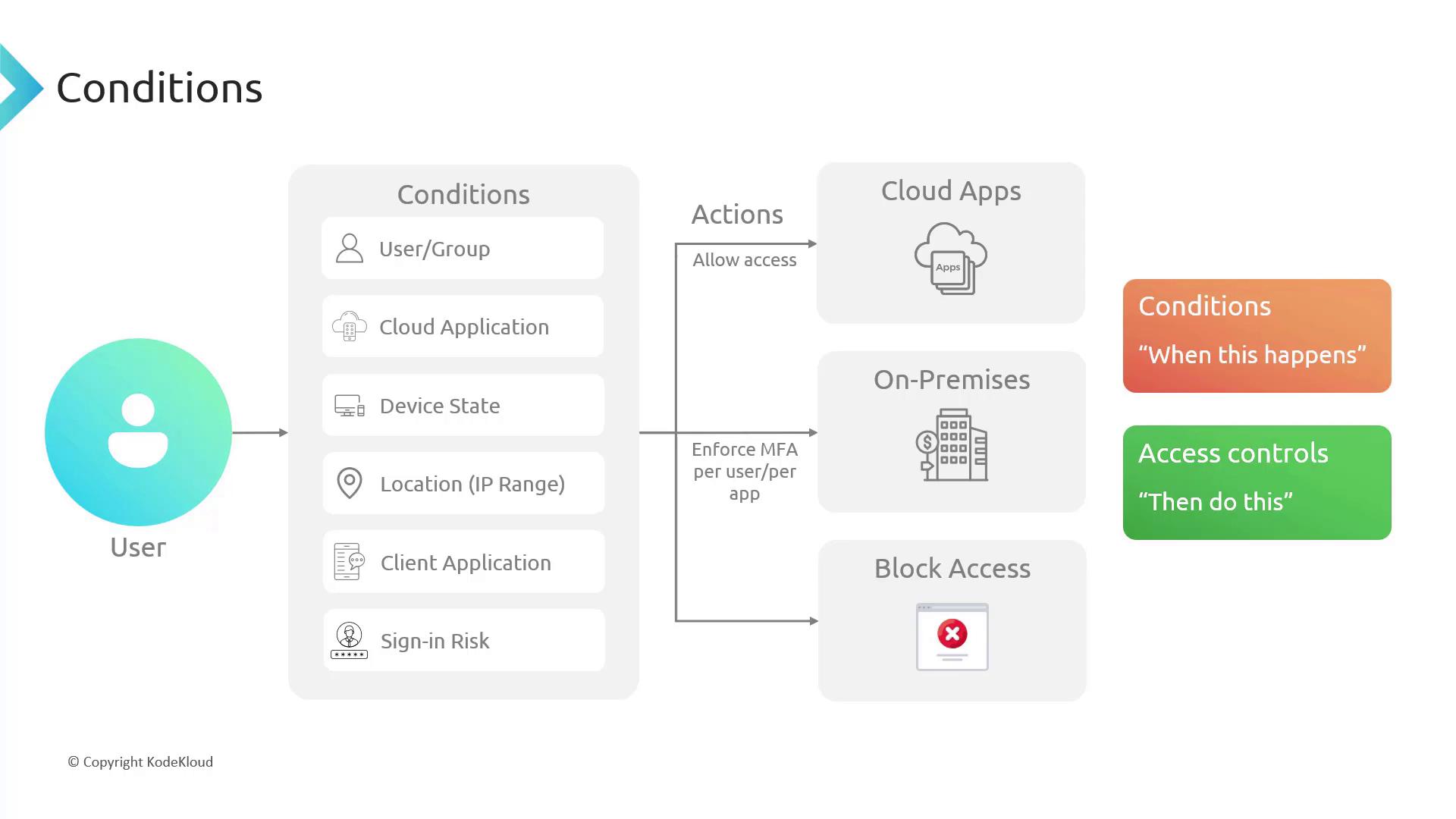
Setting Up a Conditional Access Policy in the Azure Portal
Follow these step-by-step instructions to create a Conditional Access policy in the Azure portal.
1. Sign in to the Azure Portal
- Open an incognito window and navigate to portal.azure.com.
- Sign in using the appropriate credentials (for example, Abigail’s account).
Note
Even though you may sign in successfully, lacking an assigned role might restrict access to certain services.
2. Disable Security Defaults (if necessary)
Azure AD includes default security policies that may need to be disabled to allow custom policies:
- Go to Azure Active Directory > Properties.
- Scroll down to the Manage Security Defaults option.
- Click Disable and provide a reason (e.g., “My organization is using Conditional Access.”).
Disabling security defaults enables you to create and manage your own policies.
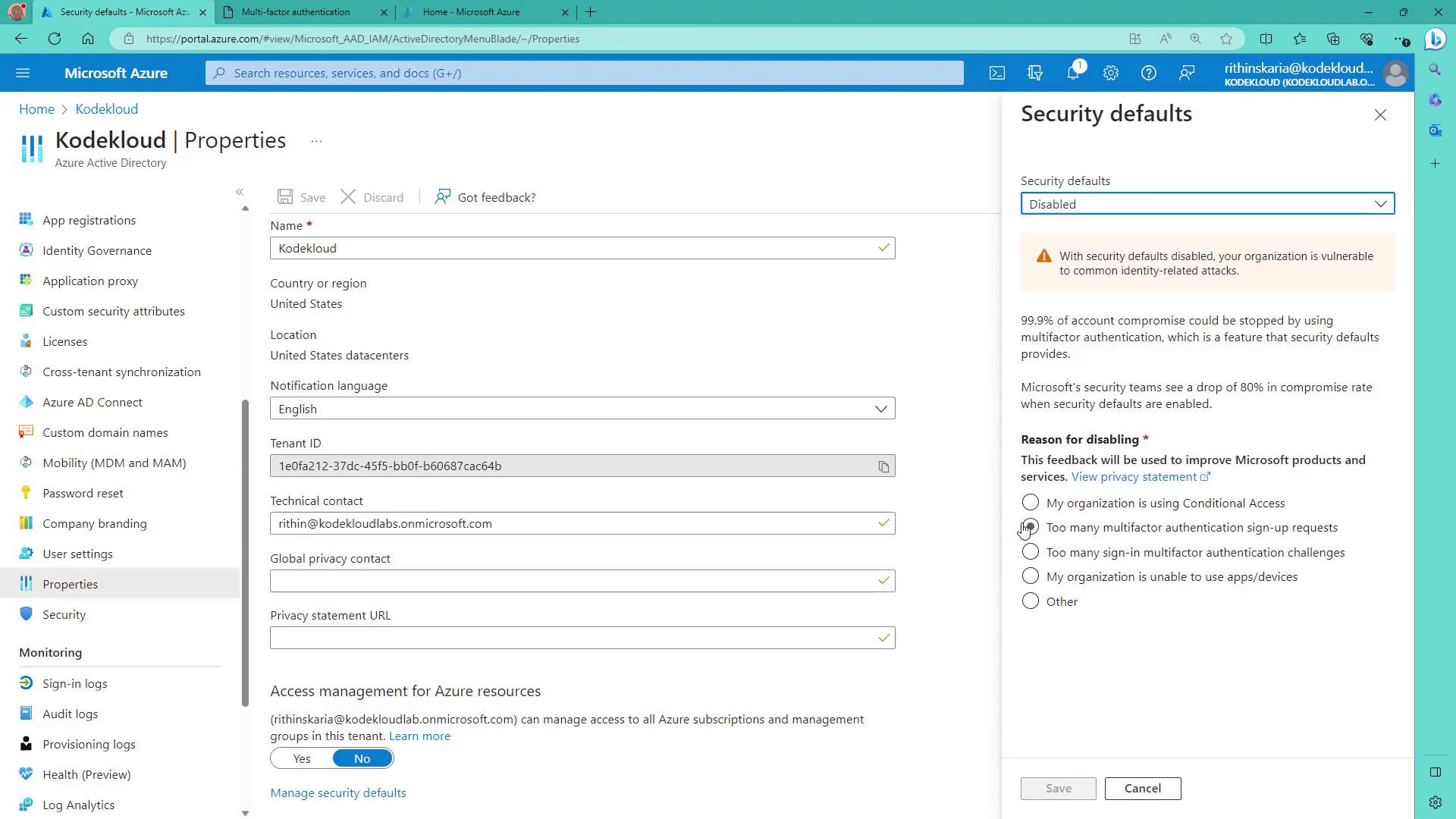
3. Create a New Conditional Access Policy
Navigate to Azure AD Conditional Access.
Click on Create a new policy.
Note
With security defaults disabled, you should no longer see warnings about defaults, and you can proceed to create your custom policy.
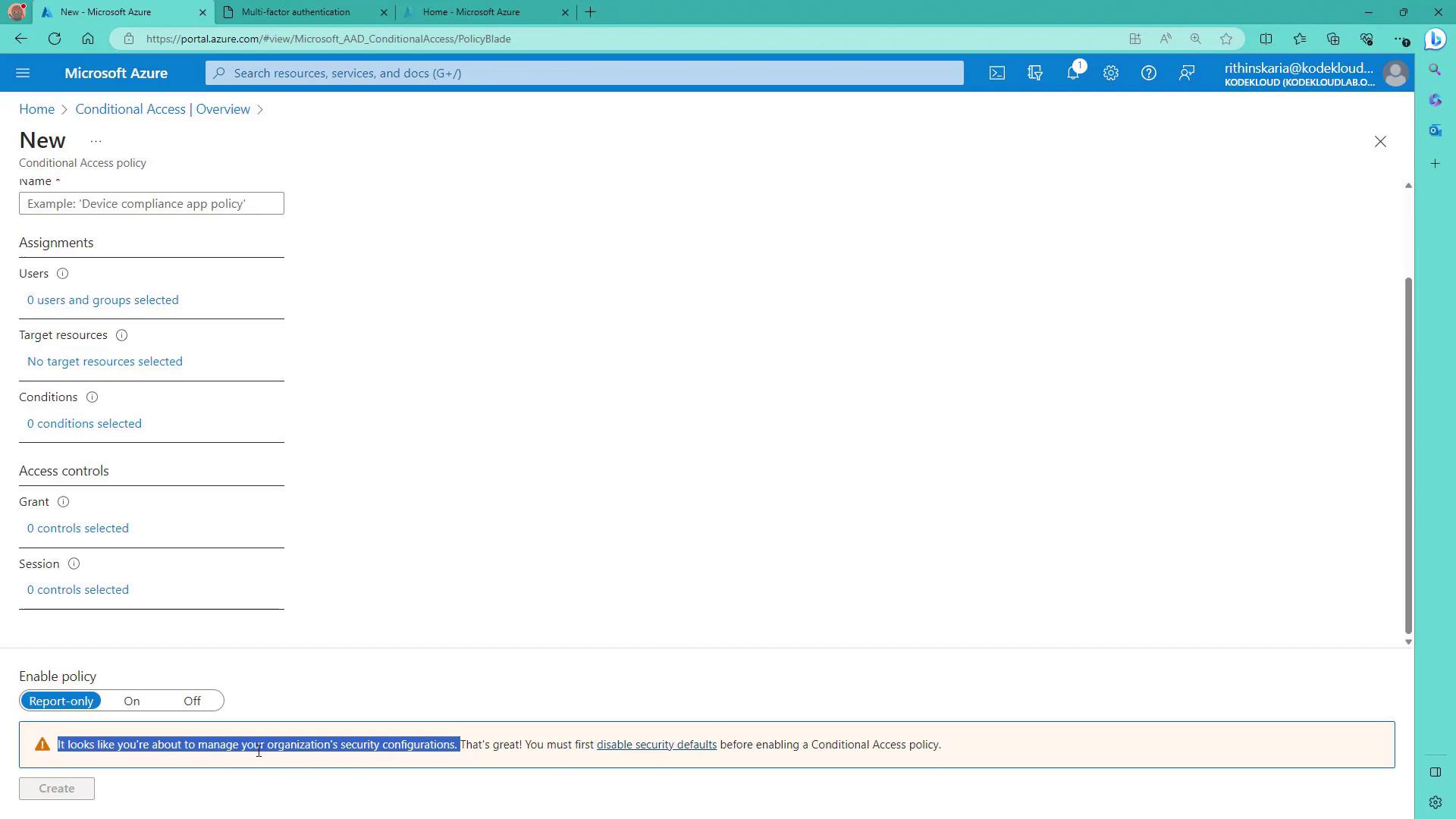
4. Configure Users and Target Resources
- Under Users and Groups, select the user(s) for whom the policy should apply; in this example, select Abigail’s account.
- Under Target Resources, click Select and choose the resource to protect—in this case, the Azure portal (Azure management).
Warning
Make sure not to lock yourself out. Always ensure an alternative access method is available.
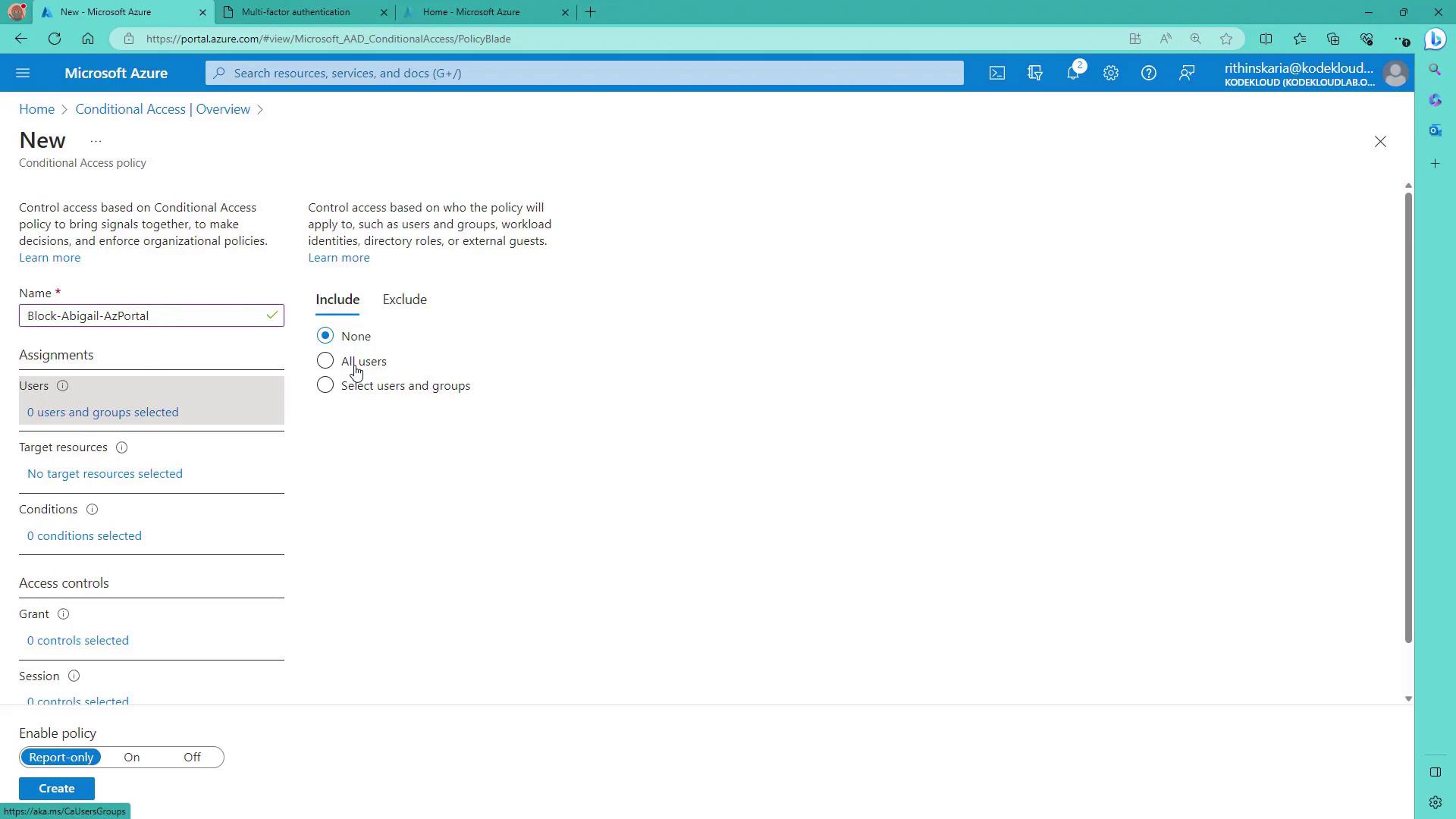
5. Specify Conditions (Optional)
While you have the option to configure conditions such as user risk, sign-in risk, device platforms, and locations, in this example, access is blocked regardless of these signals.
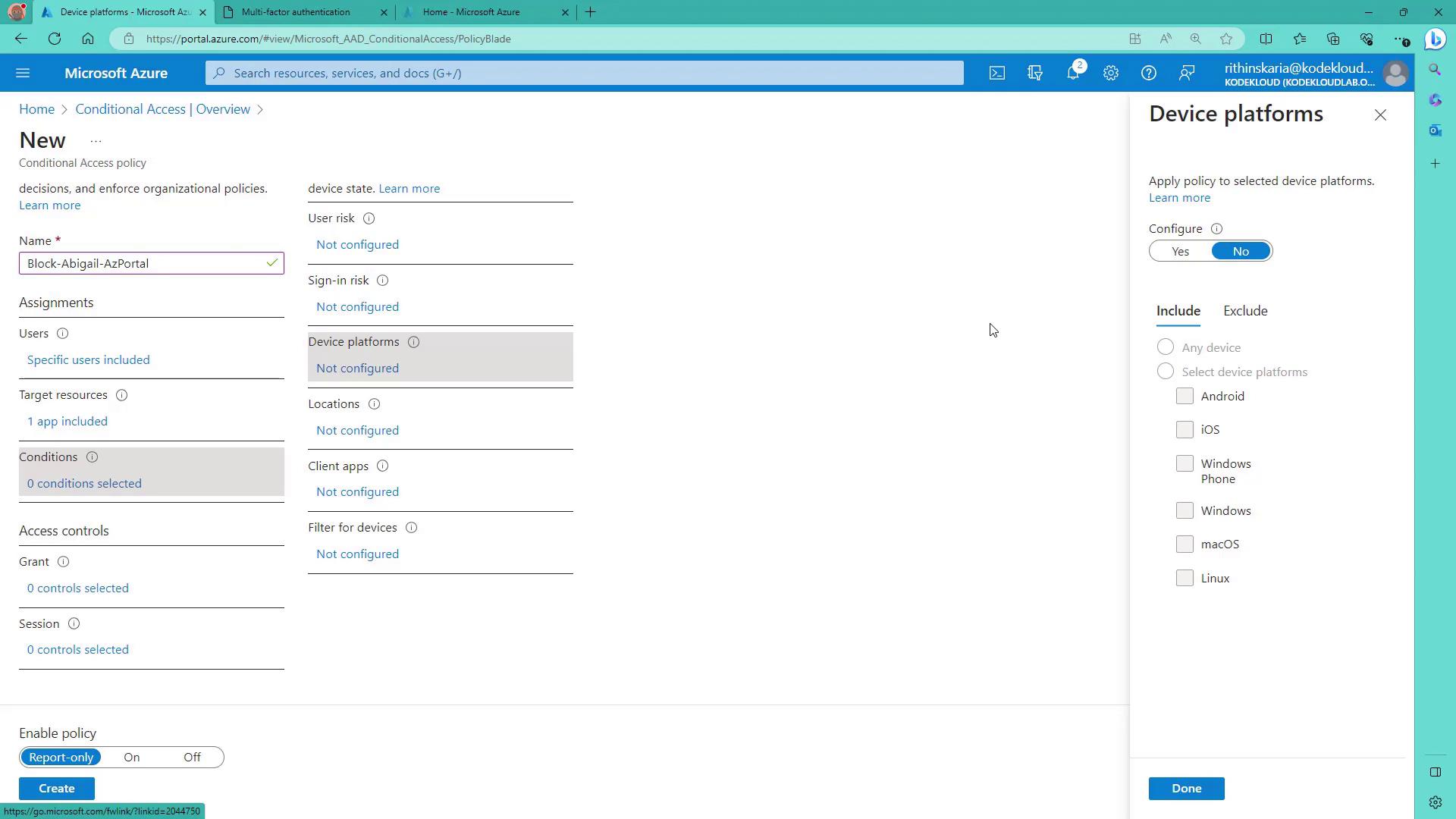
6. Define Access Controls
Under Grant, select Block access. While other options include requiring MFA or ensuring device compliance, this example uses a simple block access configuration.
7. Enable and Create the Policy
By default, the policy is set to Report only. Set it to On to enforce the policy immediately, then click Create.
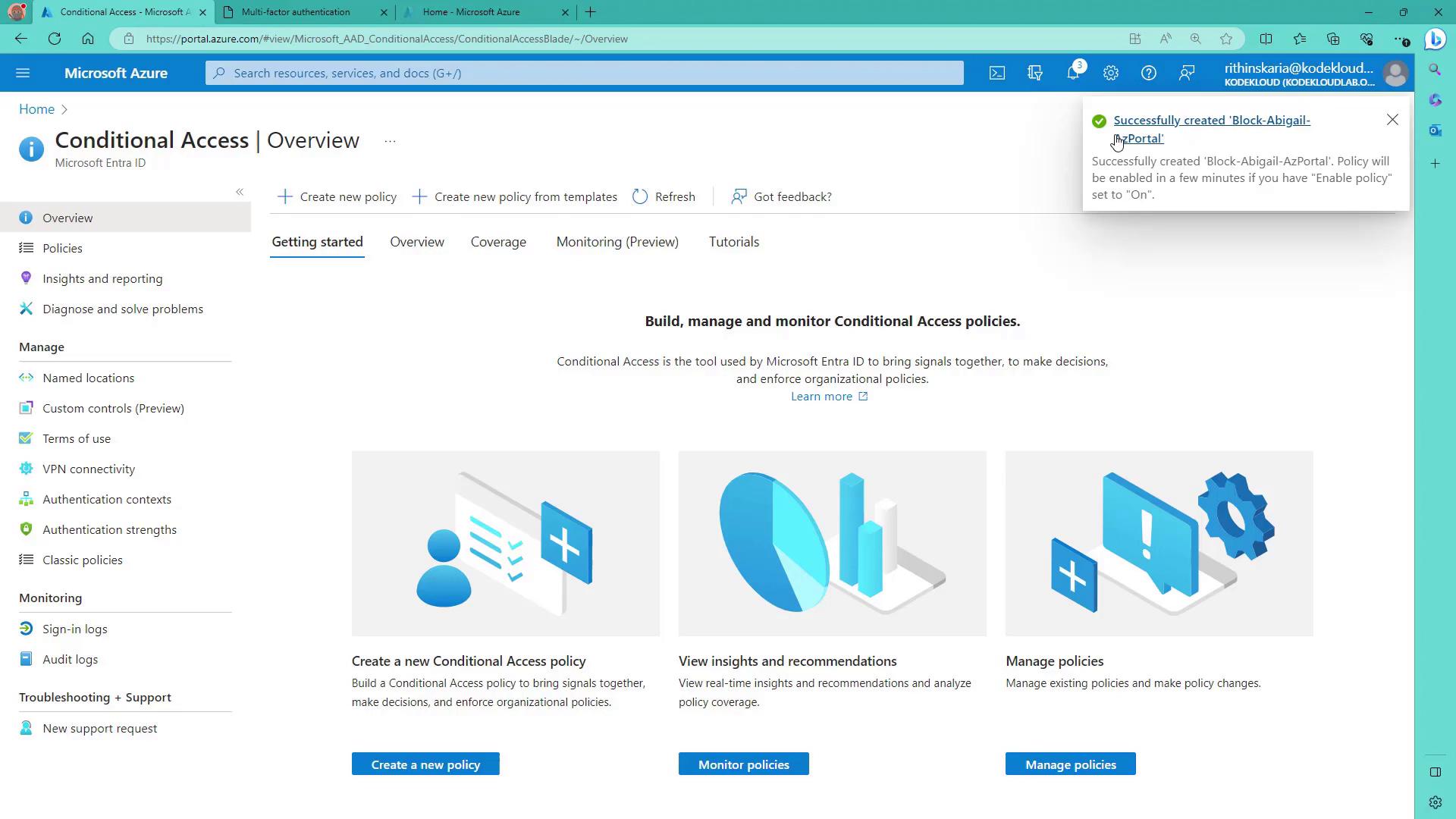
Configuring Named Locations
Azure AD Conditional Access allows you to define trusted locations for added security:
- Go to Named Locations.
- Add the countries you trust (e.g., India, United States) and configure specific IP ranges if needed.
These trusted locations can later be referenced in policies to restrict or allow access based on geographical criteria.
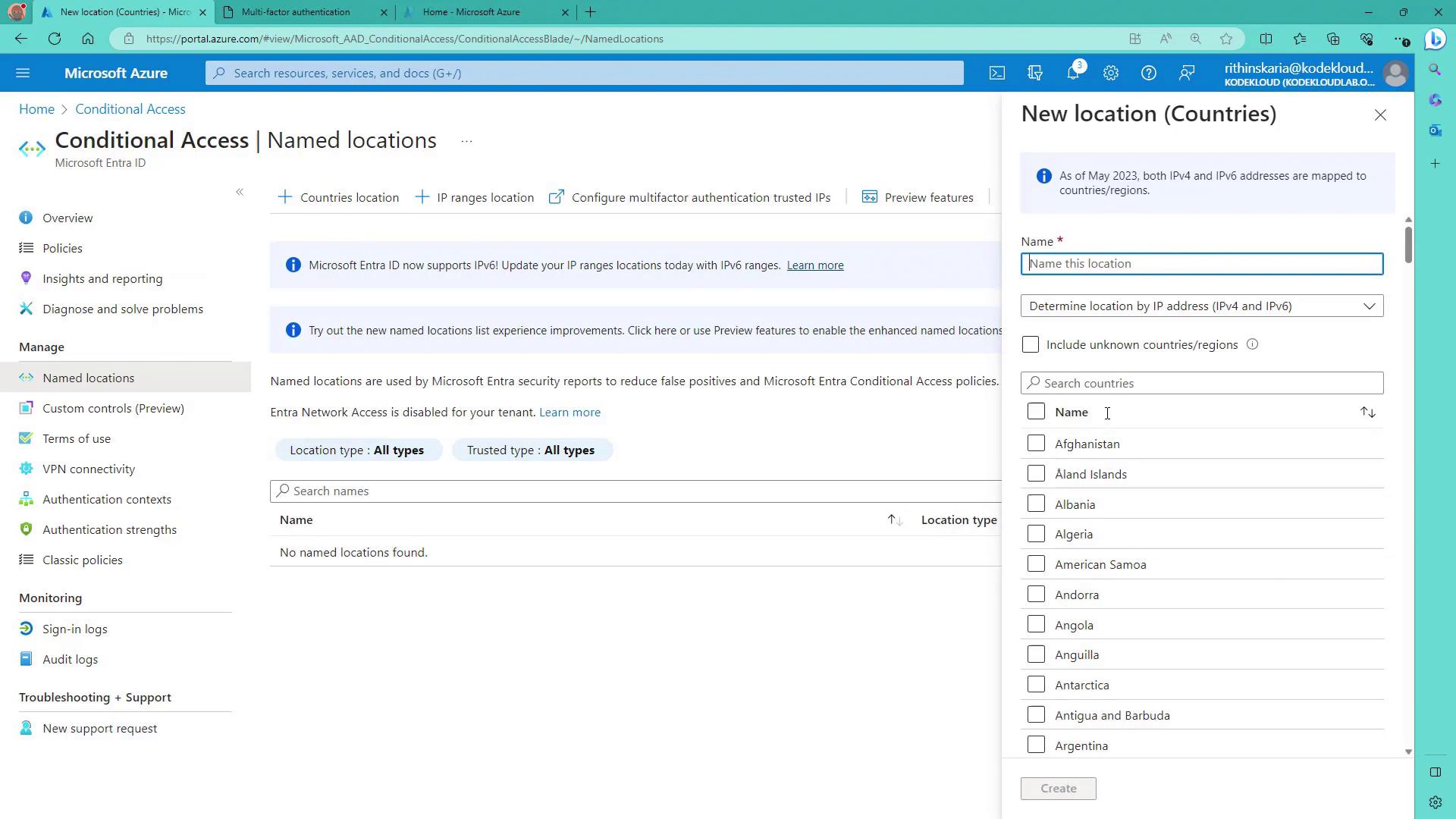
When configuring a policy, include these trusted locations to ensure that access is granted only from approved regions.
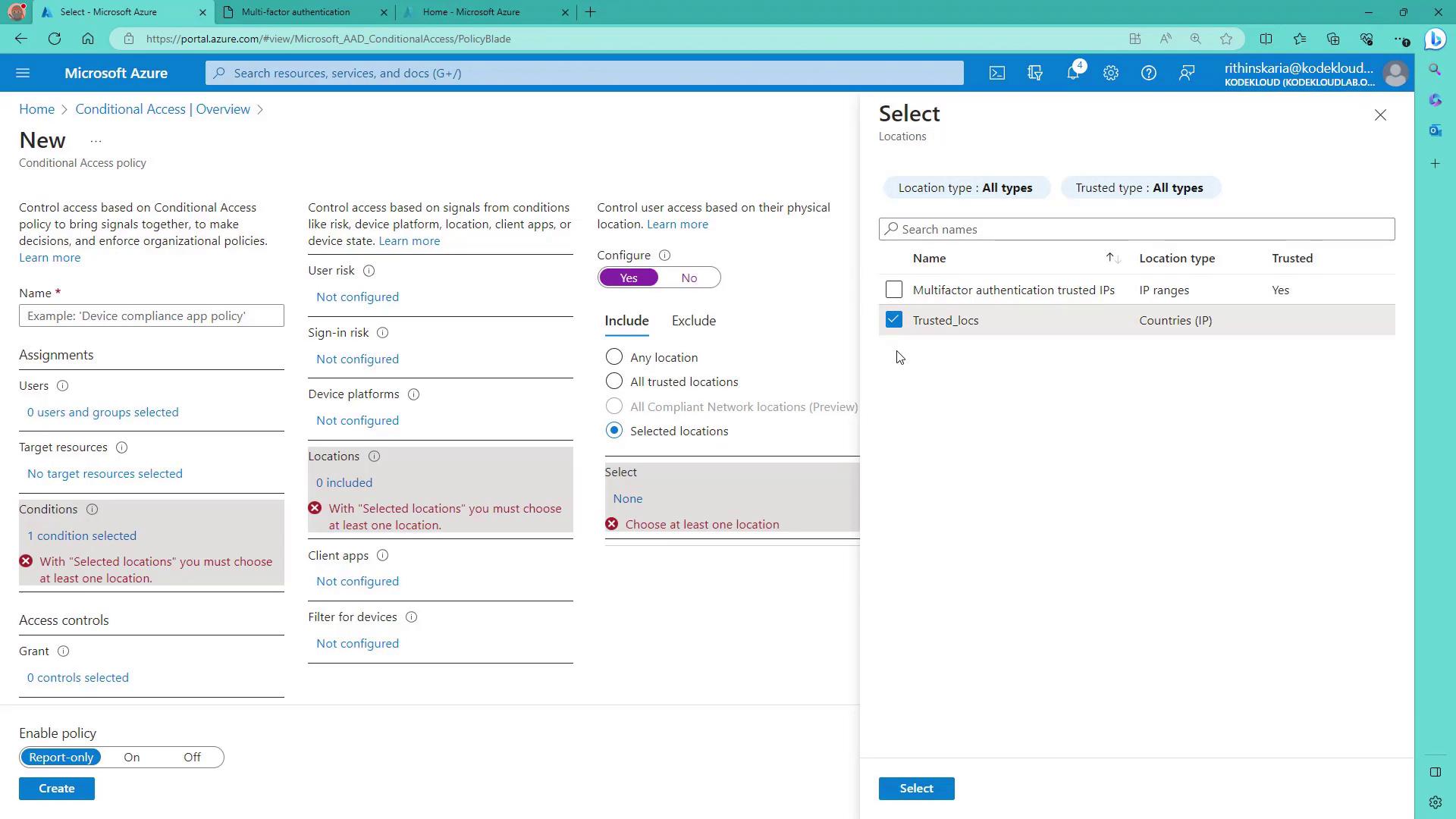
Testing and Troubleshooting the Policy
After setting up the policy:
- Open a new incognito window and navigate to portal.azure.com again.
- If the sign-in is successful but access is denied, you will receive a message indicating that your credentials are correct but you do not have permission to access the resource.
For troubleshooting:
- Click on the message for more details. The sign-in logs display both successful and failed attempts.
- Failed sign-in attempts will indicate that access has been blocked by a Conditional Access policy (e.g., “Access has been locked by a conditional access policy. This policy does not allow token issuance.”).
- Use the What-if tool under Conditional Access policies to simulate sign-in scenarios using user, device, and location details to see if the policy would trigger.
Conclusion
This lesson has provided an in-depth overview of Azure AD Conditional Access by detailing its core components, benefits, and step-by-step instructions to set up a policy within the Azure portal. By implementing these policies, you strengthen your security posture by verifying user identities, enforcing multi-factor authentication when needed, and blocking access under risky conditions.
Further content will cover access reviews.
For additional guidance, consider reviewing the following resources:
Watch Video
Watch video content